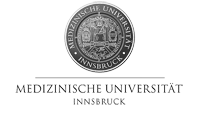|
|
 |
1 Pediatric Dpt. University Hospital Motol, Prague, Czech Republic, 2Gynaecol.-Obstetrics Dpt. University Hospital Motol, Prague, Czech Republic, 3Faculty of Management and Economics, Czech University of Agriculture, Prague, Czech Republic
The aim of our study was cytokine and chemokine spectrum analysis of breast milk and determination of differences in their concentrations between the groups of mothers with and without history of allergic diseases.
Methods: Breast milk from 55 mothers was collected 4 days after the delivery and in the 1st, 3rd, 6th and 12th month of child’s age. 16 mothers with history of allergic disease and 39 mothers without any history of allergic disease were enrolled in this study. 23 cytokines and chemokines were detected semiquantitatively using protein microarray and certain cytokines, chemokines and growth factors (IL-4, IL-5, IL-6, IL-10, IL-13, IFN-gamma, MCP1, TGF-beta1, TGF-beta2 and EGF) were quantified by ELISA.
Results: We detected
high levels of the following cytokines in breast milk from non-allergic
mothers: GRO, IL-8, MCP-1, MCP-2, TGF-beta2, EGF and in breast milk from
allergic mothers: IFN-gamma, GRO, IL-8, MCP-1, TGF-beta2 and EGF. Comparing
the two groups, we observed statistically significant difference in
concentration of IFN-gamma in breast milk at 3 months of age (p=0.016),
which was higher in breast milk from allergic mothers.
In allergic mothers group, the concentration of TGF-beta1 increased
significantly (p=0.028) from 1st and 3rd month, while the concentration in
non-allergic group slightly decreased. The difference in concentration level
changes between the groups is statistically significant (p=0.028).
EGF was tested in colostrum and in breast milk at 6th month of child’s age
and it’s concentrations decreased significantly in both allergic and non-allergic
mothers (p=0.011; p=0.004, respectively).
We also observed significant decrease in the concentration of MCP-1 in
breast milk from non-allergic mothers from 1st to 3rd month (p= 0.005).
In allergic as well as non-allergic group, significant positive correlation
was determined in concentration of TGF-beta2 with IL-6 (r=0.9 ; r=0.75
resp.), MCP-1 (r=0.835; r=0.585 resp.) and in allergic group also with IL-13
(r=0.707) and IFN-gamma (r=0.808).
Conclusion: Cytokine and chemokine spectrum of breast milk from allergic and non-allergic mothers is different. However, their biological role in breast milk often remains unknown. Protein microarray analysis and ELISA method seem to be suitable for cytokine and chemokine screening of breast milk. We plan to monitor babies of these mothers in future and we hope to find eventual predictive factors for later development of allergic disease. This project was supported by Internal Grant Agency of Ministry of Health, Czech Rep.No NR 8310-5.
